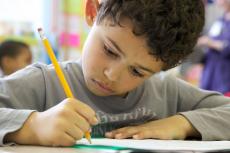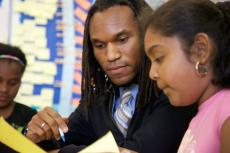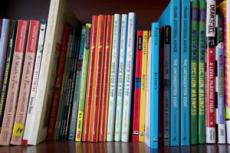Running Records Assessments/NYC MoSL Assessments
The running record assessment forms provide a book introduction, the typed text, a sidebar of reading characteristics, a scoring guide, comprehension questions with sample responses, and space to take notes and to jot student responses. A Teacher Guidebook for Levels A-K and one for Levels L-Z is available in the Supporting Documents of each folder and explains in detail the assessments and includes suggestions for how to use the assessments to plan differentiated, explicit instruction for each student assessed.
There are many ways you may choose to use our running records assessments.
General Running Records Assessments
If you are not using these assessments as your school’s New York State SLO assessments or New York City MoSL, you should look to our General Running Records Assessments folder. There you will find our most recently researched and supported A-K running records, which include two titles of purchasable assessment books, available from Kaeden Publishers, for every level, A-K. The Kaeden order form can be found in this same folder. There are also two sets of text excerpts for levels L-Z which include student and teacher copies. You will also find additional archived assessments at levels A-K, aligned to texts published by Lee & Low and Scholastic publishers, along with their relevant order forms.
New York City Measures of Student Learning Assessments (MoSL)
To support the New York City Measures of Student Learning (MoSL) requirements, we continue to offer two sets of running records: one for Beginning-of-Year (BOY) assessment and one for the EOY assessment. These can be found in the folder titled “TCRWP New York City Measures of Student Learning (MoSL).” The NYCDOE states that these texts should be used in place of older versions of TCRWP books, and books must only be used as labeled for BOY and EOY. If desired, the BOY texts can also be used as interim assessments across the school year. For questions regarding MoSL, please contact the DOE at periodicassessment@schools.nyc.gov.
Please note, NYC MoSL information is current as of September 2018.
New York State-approved Student Learning Objectives (SLO)
TCRWP Running Records is a New York State-approved option for determining and assessing Student Learning Objectives (SLOs). In this folder, you’ll find two sets of running records, levels A-Z. The A-K sets require purchased texts published by Kaeden: the order form can be found in the Supporting Document folder.
Please contact us at contact@readingandwritingproject.com if we can help you in any way.
Click here to download Kaeden's new order form for digital and paper books
Click here to download the TCRWP order form for periodic assessment, developed for NYC DOE schools.
How to Do Assessments Digitally
2020-2021 Running Records






